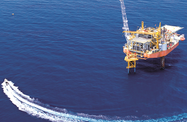 On investing in energy transmission and distribution
On investing in energy transmission and distribution
How can official development assistance (ODA) and soft financing help alleviate funding shortfalls for energy projects?
DAW EI PHYUSIN HTAY: We have seen success with smaller energy projects that provide around 5-10 MW of power for areas that are not connected to the grid, as they can be completed quickly and require lower amounts of financing. ODA from organisations such as the Wold Bank has reduced the cost of capital for such small-scale projects, and is often a vital component in a mixed-funding structure.
Grants are also available for projects that prioritise technologies such as solar energy, and leaders in remote areas can use such opportunities to provide hybrid power solutions to residents. For instance, mixing solar power with diesel has been successful in Shan State and Tanintharyi Region.
Due to the tough financing environment, it is challenging to complete large projects. However, international lenders tend to be interested in larger-scale works. The Myingyan Power Plant was one such project, with the International Finance Corporation consulting with key players in the early stages and providing a syndicated loan. To ensure that this success can be replicated and Myanmar’s energy shortage solved, ministries must remain open to financing partnerships so that we can maintain a strong pipeline of projects.
In what ways did the tariff increases in 2019 affect the commercial viability and pipeline of electricity transmission projects?
DAW EI PHYUSIN HTAY: The tariff increases in 2019 have had two main effects. First, retail users and commercial operators alike have become more sparing in their consumption due to increased costs. While higher costs tend to be passed on to the end user, the commercial sector is also venturing to find more economical sources of energy. As such, the second effect of the tariffs is that companies have begun to look for power outside the national grid, whether it be from independent power producers or in-house, small-scale coal power plants.
The government now needs to improve the reliability of power to match the new price, or the use of independent solutions will grow. Thankfully, the tariff increase greatly improved the balance sheet of the Ministry of Electricity and Energy (MEE), with the ministry turning a profit at the end of 2019. This is a strong signal for growth in the medium term. It is expected that electricity demand will rise by over 10% per year, thus the ministry will have to work to stymie losses during the transmission and distribution phases. Failure to do so may result in calls to raise tariffs once again to offset financial losses compounded by transmission inefficiencies.
Where should transmission infrastructure improvements be focused, and how can last-mile distribution be improved?
DAW EI PHYUSIN HTAY: While we have made strides in distribution, transmission has remained a pressing infrastructural concern. Transmission is executed by local and international partners, but without increased investment, we will reach a bottleneck in the coming years. We need to develop wide-reaching transmission networks rather than relying on singular 500-kV and 230-kV lines. This offers an opportunity for financing from international organisations, and because such projects can take upwards of five years to complete, they should be started immediately.
Power plants and major substations are connected to a smart network, but the effect of this is limited as it does not cover the entire country. Demand forecasting also remains difficult, as we do not yet possess the technology to analyse received demand accurately. It will take 10 years and significant levels of investment in transmission before we see advanced technology and data acquisition become widespread. Myanmar has excellent IT engineers, but to help expedite the sector’s technological advancement, we need to encourage these skilled individuals to enter into management positions in the private sector and at the MEE.

 On investing in energy transmission and distribution
On investing in energy transmission and distribution